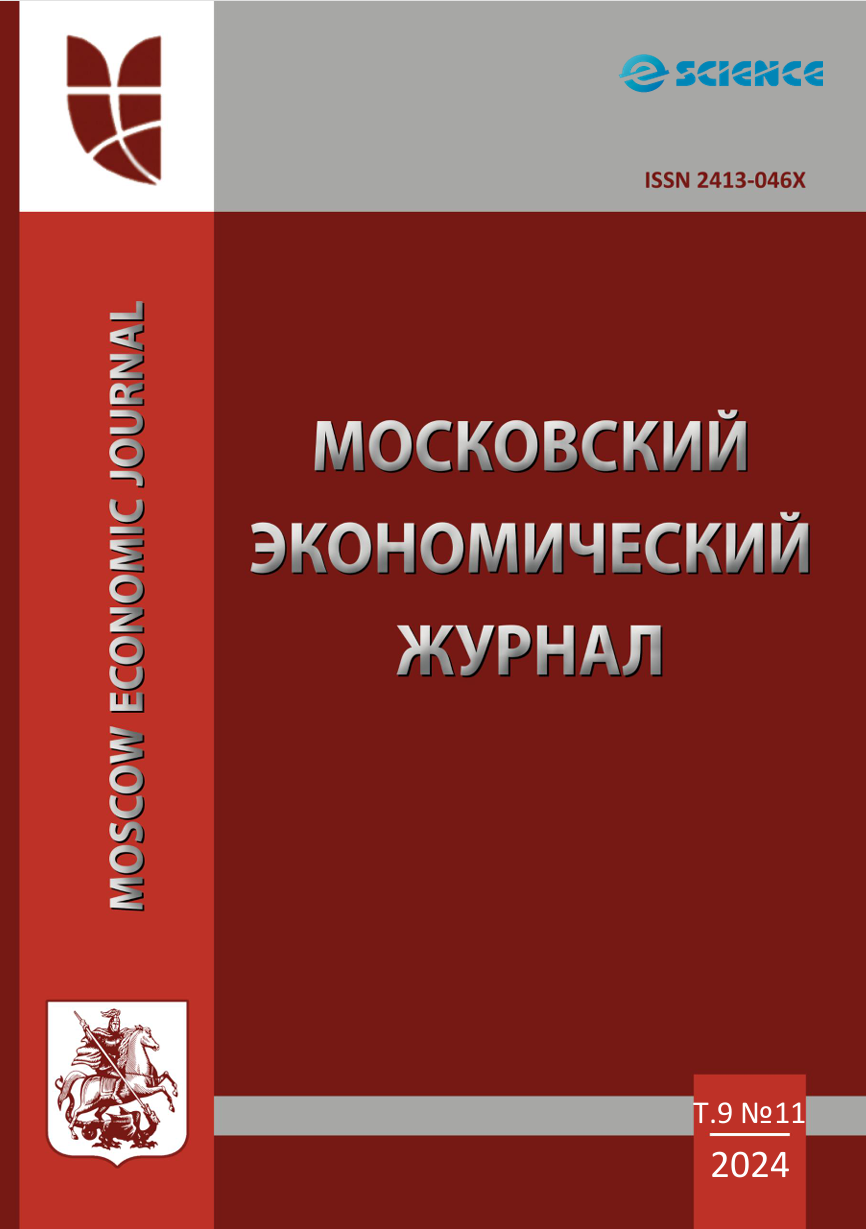UDC 314.17
The article examines the features of the demographic situation in the Penza region, provides a generalized assessment of the severity of the demographic crisis in the region, analyzes and predicts the population using statistical modeling methods. Human society is a complex system that is constantly evolving and undergoing significant changes. In recent years, research in the field of demography has become particularly important, as it helps to understand how changes in the size and structure of the population affect the economy, social sphere and politics. The relevance of the topic is due to the fact that demography determines the future of the country and the possible standard of living of future generations. The demographic problem is one of the most urgent for the Penza region. The population is rapidly decreasing against the background of a falling birth rate. In practical terms, the field of demographic research includes a description of the demographic situation, analysis of trends and factors of demographic processes. When assessing regional crisis situations by the level of natural population loss, it was revealed that, starting from 2020 to the present, there is a crisis situation in the demographic sphere of the region. Forecasting the population of the region confirmed that the negative trend will continue in the short term. A regression model has been developed to better understand demographic processes and identify key factors affecting population size. Based on it, a quantitative analysis of the influence of various factors on the overall fertility rate was carried out. As a result of the study, the main causes of the decline in the birth rate were identified and priority areas affecting the stabilization of the demographic situation in the region were identified.
demography, fertility, mortality, modeling of demographic processes, regression analysis, forecasting, trend model
1. Akinfeeva E. V., Nikonova M. A. Faktory, vliyayuschie na demograficheskuyu situaciyu v regionah Dal'nevostochnogo federal'nogo okruga // Ekonomicheskiy analiz: teoriya i praktika. 2024. T. 23, № 4(547). S. 666-690. DOIhttps://doi.org/10.24891/ea.23.4.666.
2. Vafin E. Ya. Modelirovanie prognoznyh parametrov demograficheskoy situacii v Respublike Tatarstan na period do 2036 goda v usloviyah povysheniya pensionnogo vozrasta // Finansovyy biznes. 2021. № 10(220). S. 12-17.
3. Statisticheskoe modelirovanie i klasterizaciya kak osnova analiza informacionnoy bazy dlya prinyatiya upravlencheskih resheniy po razvitiyu sel'skih territoriy / L. B. Vinnichek, A. Yu. Kindaev, A. Yu. Pavlov, A. V. Moiseev // Mezhdunarodnyy sel'skohozyaystvennyy zhurnal. 2024. № 3(399). S. 345-351. DOIhttps://doi.org/10.55186/25876740_2024_67_3_345.
4. Gordon V. A., Bakaeva N. V., Chernyaeva I. V. Issledovanie faktorov demograficheskogo prirosta naseleniya regiona // Nauchnyy zhurnal stroitel'stva i arhitektury 2023. № 1(69). S. 123-134. DOIhttps://doi.org/10.36622/VSTU.2023.69.1.010.
5. Druzhinin P. V., Molchanova E. V., Podlevskih Yu. L. Vliyanie pandemii COVID-19 na smertnost' naseleniya rossiyskih regionov // Trudy Karel'skogo nauchnogo centra Rossiyskoy akademii nauk. 2021. № 7. S. 116-128. DOIhttps://doi.org/10.17076/them1421.
6. Komponentnaya model' sistemy prognozirovaniya demograficheskih pokazateley regiona / I. S. Evdokimova, S. S. Mihaylova, S. D. Danilova, I. R. Shulunova // Ekonomika i predprinimatel'stvo. 2020. № 11(124). S. 492-499. DOIhttps://doi.org/10.34925/EIP.2020.124.11.091.
7. Ekonomiko-matematicheskie metody i modeli v prognozirovanii razvitiya sel'skogo hozyaystva / N. F. Zaruk, G. A. Volkova, O. N. Suhanova [i dr.] // Niva Povolzh'ya. 2023. № 4(68). DOIhttps://doi.org/10.36461/NP.2023.68.4.021.
8. Oreshnikov V. V., Nizamutdinov M. M. Prognoz demograficheskogo razvitiya municipal'nogo obrazovaniya s primeneniem metodov ekonomiko-matematicheskogo modelirovaniya // Ekonomicheskiy analiz: teoriya i praktika. 2022. T. 21, № 8(527). S. 1562-1582. DOIhttps://doi.org/10.24891/ea.21.8.1562.
9. Plehanova T. G., Zhukova I. B., Plehanova E. V. Ispol'zovanie ekonometricheskih modeley dlya prognozirovaniya demograficheskoy situacii v RF // Vestnik Yuzhno-Rossiyskogo gosudarstvennogo tehnicheskogo universiteta (NPI). Seriya: Social'no-ekonomicheskie nauki. 2021. T. 14, № 4. S. 164-171. DOIhttps://doi.org/10.17213/2075-2067-2021-4-164-171.
10. Ekonomicheskaya bezopasnost' Rossii. Obschiy kurs: uchebnik / pod red. V. K. Senchagova. 6-e izd. - Moskva: Laboratoriya znaniy, 2020. 818 s. URL: https://znanium.ru/catalog/product/1209184 (data obrascheniya: 11.11.2024).
11. Suhanova O. N., Mentyukova O. V. Ekonometricheskie modeli kak instrument analiza v upravlenii ekonomicheskimi sistemami // Modeli, sistemy, seti v ekonomike, tehnike, prirode i obschestve. 2016. № 1(17). S. 125-134.
12. O nacional'nyh celyah razvitiya Rossiyskoy Federacii na period do 2030 goda i na perspektivu do 2036 goda: ukaz Prezidenta RF ot 7 maya 2024 goda №309.
13. Penzenskaya oblast' v cifrah 2023. Kratkiy statisticheskiy sbornik [Elektronnyy resurs]. – Rezhim dostupa: https://58.rosstat.gov.ru/storage/mediabank/PENZENSKAYa%20OBLAST'%202023%20v%20cifrah%20(oficial'noe%20izdanie).pdf, svobodnyy. – (data obrascheniya: 08.10.2024).











